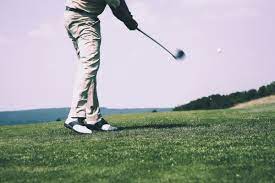
When it comes to golf, hitting a slice or a hook can be frustrating for any player. Both shots are common swing misses that can result in poor accuracy and distance. However, understanding the pros and cons of each shot shape can help golfers minimize their negative effects and improve their overall game.
In this article, we will delve into the impacts of hitting a slice versus a hook on distance, ball flight, and course management.
The Slice:
A slice occurs when the ball curves excessively from left to right (for right-handed golfers). It is often the result of an open clubface and an out-to-in swing path. The major drawback of a slice is its lack of control and accuracy.
The ball tends to veer off the fairway, making it difficult to predict where it will end up. Slices also tend to have less distance compared to straight shots or hooks. This is because the misalignment of the clubface at impact causes the ball to lose energy and spin, resulting in a shorter flight.
On the positive side, a slice can add a bit of distance to your shots if you can learn to control it. This is because the initial trajectory of a slice is higher, leading to a longer carry distance. Additionally, the slice can be advantageous on courses with doglegs or tight fairways that require a shot to bend around obstacles.
By intentionally aiming left with an open clubface, a skilled golfer can use a slice to shape their shots and navigate challenging situations.
The Hook:
In contrast, a hook is a shot that curves excessively from right to left (for right-handed golfers). It is often caused by a closed clubface and an in-to-out swing path. Just like the slice, a hook can be detrimental to your game.
It lacks control and accuracy, making it difficult to predict the landing spot. Hooks also tend to have less distance compared to straight shots or slices. The curved path of a hook causes the ball to lose energy and spin, resulting in a shorter flight similar to a slice.
Despite the drawbacks, a hook can also have its advantages. When controlled, a hook can add distance to your shots. The initial trajectory of a hook is lower than that of a slice, resulting in more roll on the fairway. This can be beneficial on courses with long par-4s or par-5s that require maximum distance off the tee.
Additionally, a hook can help golfers navigate doglegs or tight fairways that bend the opposite way. By intentionally aiming right with a closed clubface, a skilled golfer can use a hook to shape their shots and work with the layout of the course.
Minimizing the Negative Effects:
While both the slice and hook have some benefits, it is important to minimize their negative effects to improve your overall game. Here are a few tips to achieve better control and accuracy:
1. Work on your grip: A proper grip can help you square the clubface at impact. Experiment with different grip styles to find what feels comfortable and allows you to hit straighter shots.
2. Focus on your alignment: Make sure your feet, hips, and shoulders are properly aligned with your target. This will help you swing along the correct path and decrease the chances of a slice or hook.
3. Practice your swing path: Take the time to work on your swing path to ensure a more consistent ball flight. Practice swinging along an imaginary target line or use swing aids to guide your path.
4. Seek professional instruction: A golf instructor can identify the root cause of your slice or hook and provide personalized guidance and drills to improve your swing.
5. Use equipment suited to your game: Consider getting fitted for clubs that match your swing characteristics. This can help reduce the tendency to slice or hook.
Final Thoughts:
Both the golf slice and hook can be detrimental to your game. While they have some advantages, their lack of control and accuracy can lead to poor results. By understanding the impacts of each shot shape on distance, ball flight, and course management, golfers can work on minimizing the negative effects.
Seek opportunities for improvement through practice, instruction, and equipment choices. With dedication and effort, you can turn your slice or hook into a more reliable and consistent shot, improving your overall performance on the golf course.
